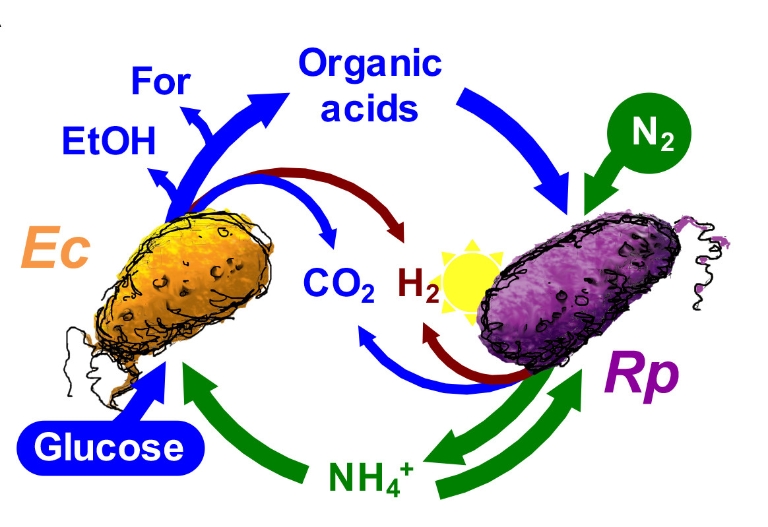An Indiana University biologist has been awarded $1.15 million from the National Science Foundation to help “recruit” bacteria in the effort to improve health and reduce pollution.
The grant will support Jake McKinlay’s research on how bacteria cooperate or compete over nutrients. These interactions are the key to many important chemical reactions in nature and the body.

“Almost everything we know about bacteria comes from studying a single species at a time inside a test tube, but that’s not how microbes exist in nature,” said McKinlay, an assistant professor in the IU Bloomington College of Arts and Sciences’ Department of Biology. “Bacteria are rarely found alone, and their activities are highly intertwined.”
There is a need to understand more about bacterial interactions since the ability to guide or control these interactions could potentially be used to create new medical treatments or produce fuels and other useful chemicals.
The replacement of microbial communities in the lower intestine – also known as the “microbiome” – has been successfully used to treat conditions such as Crohn’s disease, for example. Genetically modified microbial communities have also been used to produce anti-cancer compounds. And environmental engineers use microbes to break down harmful chemicals such as oil spilled in the environment or convert renewable materials such as wood fiber into biofuels.
But generally, the focus has remained on using single microbial species from nature to achieve these results – or trying to genetically engineer a single microbial species to perform a long series of complicated tasks.

“Bacteria often work together in nature to break down complex compounds or perform special tasks,” McKinlay said. “There are times where it might make more sense to use a community of microbes rather than trying to engineer a single organism that ‘does it all.’”
The grant will also support McKinlay’s efforts to reach beyond the lab by working with local high school students and their teachers to provide research experiences and guide curriculum based on the work conducted in his lab.
The research experiences will take place through the Jim Holland Summer Science Programs, which provide underrepresented high school students the opportunity to spend one to two weeks on campus learning from science faculty and graduate students. The curriculum design will take place through IU Biology Summer Institute, a workshop program that helps local high school teachers create lessons based upon research occurring on campus.
“I’m planning to combine my skills in microbiology and illustration to create a storytelling platform that can be quickly adjusted to learners of all ages and backgrounds,” said McKinlay, who has pursued an interest in drawing since high school. “I’ve worked hard to emphasize functional knowledge in my teaching, but it’s still easy for students to lose track of the details. The idea is to use storytelling to help communicate detail-intensive subject matter into functional knowledge since people are hard-wired to learn by storytelling.”
Specifically, McKinlay said the platform will teach important concepts in bacteriology through an easily understandable storyline that follows an E. coli cell through different environments, where it will have to use its biochemical networks to “get out of tricky situations” and interact with other microbes along the way.

Shortly after joining IU in 2011, McKinlay designed one of the first sustainable relationships between two bacterial species – E. coli and R. palustris – in a lab environment. In this system, E. coli converts sugar into several acidic compounds that feed R. palustris, which in turn produces ammonium required by E. coli to survive. Each species’ dependence on the other for an essential nutrient resulted in the stable relationship needed to examine their interaction.
Other researchers had created similar laboratory-based “cooperative” relationships between bacteria species in the past, but they were always unstable, leading to a lack of reproducibility. McKinlay’s ability to design a sustainable system, supported by a $750,000 grant from the Department of Energy, was a key step in attracting the NSF award.
The new grant is part of the NSF CAREER Awards program, which recognizes faculty who “exemplify the role of teacher-scholars through outstanding research, excellent education, and the integration of education and research.” It is regarded as one of the most prestigious given in support of junior faculty.

